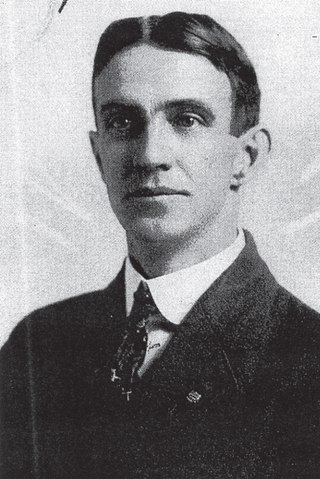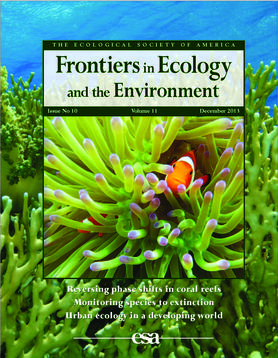
Henry Chandler Cowles was an American botanist and ecological pioneer. A professor at the University of Chicago, he studied ecological succession in the Indiana Dunes of Northwest Indiana. This led to efforts to preserve the Indiana Dunes. One of Cowles' students, O. D. Frank continued his research.

Charles Sutherland Elton was an English zoologist and animal ecologist. He is associated with the development of population and community ecology, including studies of invasive organisms.
Ecology is a new science and considered as an important branch of biological science, having only become prominent during the second half of the 20th century. Ecological thought is derivative of established currents in philosophy, particularly from ethics and politics.
William Dwight Billings was an American ecologist. He was one of the foundational figures in the field of plant physiological ecology and made major contributions to desert and arctic/alpine ecology.
Simon Asher Levin is an American ecologist and the James S. McDonnell Distinguished University Professor in Ecology and Evolutionary Biology and the director of the Center for BioComplexity at Princeton University. He specializes in using mathematical modeling and empirical studies in the understanding of macroscopic patterns of ecosystems and biological diversities.

Victor Ernest Shelford was an American zoologist and animal ecologist who helped to establish ecology as a distinct field of study. He was the first president of the Ecological Society of America in 1915, and helped found the Nature Conservancy in the 1940s. Shelford's early visits and study of Volo Bog in Northern Illinois helped establish its ecological significance. Volo Bog became the first purchase of the Illinois Nature Conservancy.
F. Stuart Chapin III is a professor of Ecology at the Department of Biology and Wildlife of the Institute of Arctic Biology, University of Alaska. He was President of the Ecological Society of America (ESA) from August 2010 until 2011.
The Eminent Ecologist Award is prize awarded annually to a senior ecologist in recognition of an outstanding contribution to the science of ecology. The prize is awarded by the Ecological Society of America. According to the statutes, the recipient may be from any country in the world. However, in practice very few non-U.S. citizens have received the award. The awardee receives lifetime membership in the society.
Joseph Hurd Connell FAA was an American ecologist. He earned his MA degree in zoology at the University of California, Berkeley and his PhD at Glasgow University. Connell's first research paper examined the effects of interspecific competition and predation on populations of a barnacle species on the rocky shores of Scotland. According to Connell, this classic paper is often cited because it addressed ecological topics that previously had been given minor roles. Together, with a subsequent barnacle study on the influence of competition and desiccation, these two influential papers have laid the foundation for future research and the findings continue to have relevance to current ecology. His early work earned him a Guggenheim fellowship in 1962 and the George Mercer Award in 1963.

Frontiers in Ecology and the Environment is a peer-reviewed scientific journal issued ten times per year, and consists of peer-reviewed, synthetic review articles on all aspects of ecology, the environment, and related disciplines, as well as short, high-impact research communications of broad interdisciplinary appeal. Additional features include editorials, commentaries, a letters section, Life Lines, job ads, and special columns. It is published by Wiley-Blackwell on behalf of the Ecological Society of America (ESA). According to the Journal Citation Reports, the journal has a 2021 impact factor of 13.780, ranking it eleventh out of 279 journals in the category "Environmental Sciences" and fourth out of 174 journals in the category "Ecology".
Aaron M. Ellison is an American ecologist, photographer, sculptor, and writer. He retired in July 2021 after 20 years as the senior research fellow in ecology at Harvard University and as a Senior Ecologist at the Harvard Forest. He also served as deputy director of the Harvard Forest from 2018 to 2021. Until 2018, he also was an adjunct research professor at the University of Massachusetts in the Departments of Biology and Environmental Conservation. Ellison has both authored and co-authored numerous scientific papers, books, book reviews and software reviews. For more than 30 years, Ellison has studied food-web dynamics and community ecology of wetlands and forests; the evolutionary ecology of carnivorous plants; the responses of plants and ants to global climate change; application of Bayesian statistical inference to ecological research and environmental decision-making; and the critical reaction of Ecology to Modernism. In 2012 he was elected a fellow of the Ecological Society of America. He was the editor-in-chief of Ecological Monographs from 2008 to 2015, was a senior editor of Methods in Ecology and Evolution from 2018-2021, and since 2021 has been the executive editor of Methods in Ecology and Evolution.
Brian Joseph Enquist is an American biologist and academic. Enquist is a Professor of Biology at the University of Arizona. He is also external professor at the Santa Fe Institute. He is a biologist, plant biologist and an ecologist. He was elected as a Fellow of the American Association for the Advancement of Science (AAAS) in 2012 and the Ecological Society of America (ESA) in 2018.
Nancy B. Grimm is an American ecosystem ecologist and professor at Arizona State University. Grimm's substantial contributions to the understanding of urban and arid ecosystem biogeochemistry are recognized in her numerous awards. Grimm is an elected Fellow of the American Geophysical Union, Ecological Society of America, and the American Association for the Advancement of Science.
The Society for Freshwater Science (SFS) is an international scientific society whose members study freshwater ecosystems and ecosystems at the interface between aquatic and terrestrial habitats.
Dr. Laura Huenneke is an American ecologist and former President of the Ecological Society of America. She is known for her research in public health in Arizona's Native American community, focusing on cancer prevention, invasive species, and desert ecosystems. Huenneke is the former Vice President for Research at Northern Arizona University where she continues her research studying the impact of biological diversity on ecosystems and teaching classes in Environmental Sciences. She has served on a variety of boards and review panels for ecological research journals and has received a number of awards and honors during her career as an ecologist.
Susan Patricia Harrison is a professor of ecology at the University of California, Davis who works on the dynamics of natural populations and ecological diversity. She is a fellow of the Ecological Society of America and the California Academy of Sciences. She has previously served as vice president of the American Society of Naturalists. She was elected to the National Academy of Sciences in 2018.

Ann M. Bartuska is an ecologist and biologist. She is a senior advisor at Resources for the Future and a former Deputy Under Secretary for Research, Education, and Economics (REE) at the United States Department of Agriculture and former USDA Chief Scientist.

Jean H. Langenheim was an American plant ecologist and ethnobotanist, highly respected as an eminent scholar and a pioneer for women in the field. She has done field research in arctic, tropical, and alpine environments across five continents, with interdisciplinary research that spans across the fields of chemistry, geology, and botany. Her early research helped determine the plant origins of amber and led to her career-long work investigating the chemical ecology of resin-producing trees, including the role of plant resins for plant defense and the evolution of several resin-producing trees in the tropics. She wrote what is regarded as the authoritative reference on the topic: Plant Resins: Chemistry, Evolution, Ecology, and Ethnobotany, published in 2003.
Priyanga Amarasekare is a Professor of Ecology and Evolutionary Biology at the University of California, Los Angeles (UCLA) and distinguished Fellow of the Ecological Society of America (ESA). Her research is in the fields of mathematical biology and trophic ecology, with a focus on understanding patterns of biodiversity, species dispersal and the impacts of climate change. She received a 2021 Guggenheim Fellowship and received ESA's Robert H. MacArthur Award in 2022.
Carmen Cid is a Latin American urban wetland ecologist and faculty member at Eastern Connecticut State University. She focuses on ecology education and diversity in science. Cid is a fellow of the Ecological Society of America (ESA)








